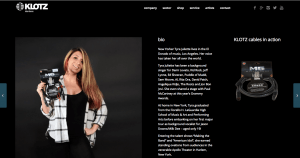If you’re anything like me, part of you is probably already switching off – but hold on, this is not an article about building your ‘personal brand’.
These five simple steps will help you to formulate a brand building strategy that will works for your company.

Step 1 – Question your motives
Think about your clients for a moment:
- What is it that you do for your clients?
- What does this enable your clients to do?
Perhaps you sell high quality nuts and bolts that let your clients create amazing pieces of furniture or build fantastic bridges. You’re helping people be creative in the truest sense – your products are an integral part of these creations, which inherently hold more interest than the nuts or bolts themselves.
Perhaps you give people great haircuts that give them the confidence to excel in that all-important job interview or at a first date? Or is it that you make super-reliable audio cables? Either way, it’s often more effective to talk about the application of what you do rather than the actual thing you do.
Thinking about how your clients use or benefit from what you do will inform how you build an advertising campaign, a social media strategy and even a business development plan.

Step 2 – What do your clients think of you?
- What do your clients think your motives are?
- How good is your customer service?
- How could you help your clients more?

Few of us are in business to be like the Buddha but if your core motive is to make money then this will show through in everything that you do. And it won’t be pretty.
On the other hand, no-one minds that you’re making money as long as you’re providing them with a product or service that they really want and you are making their lives that little bit better. This is especially true if there’s ever a mistake or problem. How do you deal with this? Do you go the extra mile for your customers?
Most service-led businesses have pretty good customer service – if they didn’t, they probably wouldn’t be trading for too long – but it’s always worth considering if there’s anything you can do to help your clients more.
3 – Big up your clients… recognisably
What you do is ultimately far more important than a logo, slogan or Facebook page. Everything else originates from this. How long would BMW last with a great logo and a snappy slogan if their cars kept breaking down?

True confidence comes from true ability, so for any branding exercise to work it must have its roots firmly planted in reality. To build up your brand, try focusing your promotions around your customers’ achievements and your efforts to support them in their endeavours.
Whether you’re doing this in a press release, on social media, in an advertisement or at a trade show, it’s imperative that you create a set of brand guidelines (created with a designer).
Gradually, your brand is associated with the successes and quality of your clients.
4 – Use a designer
Don’t make the same mistake as these people:



On the whole, people are incredibly visually literate and a badly designed logo or website sticks out like a sore thumb. However, relatively few people are any good at design and it always pays to call a professional in to help with every aspect of how your brand is portrayed – your logo, your email signature, advertisements, web pages. Check their previous work – if you like what you see, the chances are they’ll come up with something you’ll like.
Make sure you have a complete house style (not just a logo):
- Logo
- Typeface
- Layouts
- Proprietary colours
- Taglines
5 – Stay Classy
Re-establishing your brand’s raison d’être lights up the path ahead but it’s critical that you check your style and consistency across every possible point of contact:
- Website – How do you fare against your competitors?
- Social media platforms – Are all your avatars consistent? Are the cover pictures on brand?
- Email signatures – Does everyone follow the house style?
- E-marketing
- Telephone – How are calls answered? What’s the answer-phone message like?
- Response times – What is your average response time to an email or telephone message?
- Shop fronts / trade shows – How do you come across in the three-dimensional world?
These 5 steps are at best an outline and, whilst there’s a lot of colouring in to do, this approach will set you on the right path and should be fun to work through.



